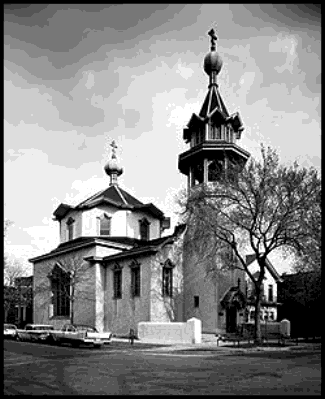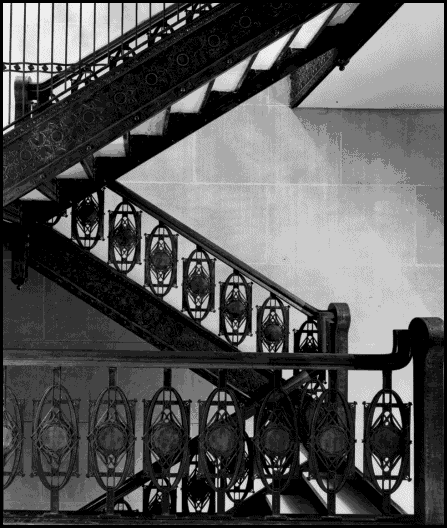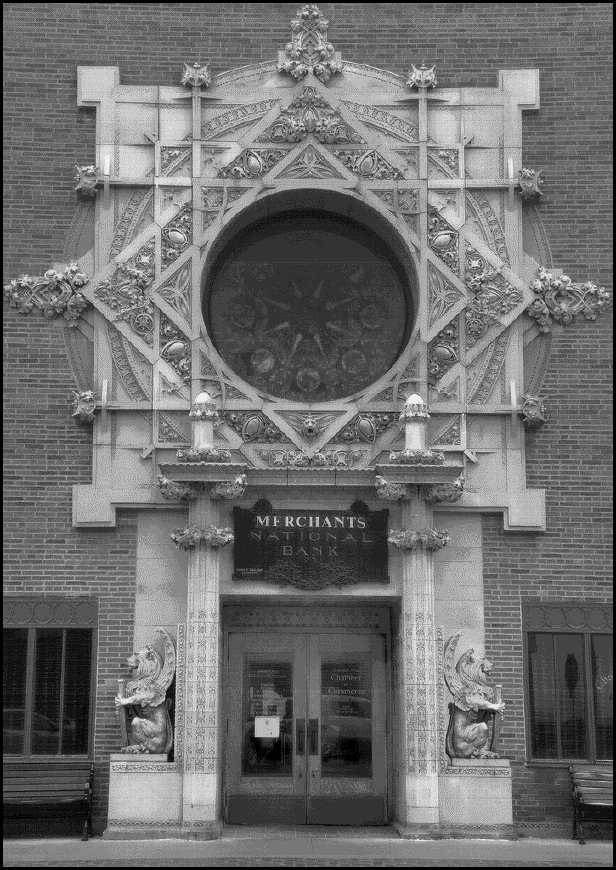And the 19th-Century Poetics
of Naturalized Architecture
Lauren S. Weingarden
(Ashgate)

Interesting what sets it off. A perfect sunset. A great meal. Falling in love. And books on architecture.
Especially architecture from a hundred or more years ago. Before they invented all those glass boxes. Before they tore down the great old buildings of New York and Chicago and Washington and Philadelphia and Boston and St. Louis. Those dandied-up constructions like wedding cakes, the arches and curves, relief panels and capitals and overhangs; brackets, mansards, trusses; Queen Anne, Italianate, Second Empire, Gothic Revival, Neoclassical.
Unlike the crystal-box builders of the 20th Century, Louis H. Sullivan was no simple blind, tasteless architect. He studied the art of art, "the useful arts." The theory of the International School of architecture was formlessness follows function; Sullivan's was the opposite. Sullivan, according to Lauren Weingarden, came under the spell of John Ruskin, who saw the function of art not merely as delight, but as a fount of wisdom, and, at the same time, usefulness.
If you make a painting, it should move the heart; if you build a building, it should do the same. Sullivan saw a building as not just a place to do business, or to get people out of the sun, rain, and wind, but as a visual representative of mankind's aspirations, and the beauty of those aspirations. In one essay, "The Tall Office Building Artistically Considered," he claimed that a building should be "a living form of speech, a natural utterance."
- The skyscraper must be tall, every inch tall ... rising in sheer exultation from bottom to top without a single dissenting line.
He called it "the eloquent peroration of most bald, most sinister, most forbidding conditions."
Ruskin might have influenced Tolstoi, Proust, Gandhi, and Sullivan ... but sometimes it's not easy for us plain folk to follow, much less comprehend, his words. He said that art "comes from organic and spiritual unity." Specifically for the likes of Sullivan, he wrote that "No man can be an architect who is not a metaphysician."
I once ran into a hand-lettered sign on a door in the science building at UC Berkeley: "Help stamp out reality. Practice a little metaphysics every day." Ruskin would never offer us such a mot. He was far too serious. And architecture for him was a serious business. "The great architect," he said, "must also be a sculptor or a painter. If he is not a sculptor or a painter, he can only be a builder."
Ruskin's favorite bit of architecture was The Ruin. Especially Gothic ruins, ones that had fallen apart, were covered with "the golden stain of time." Like Wordsworth's Tintern Abbey:
-
For I have learned
To look on nature, not as in the hour
Of thoughtless youth; but hearing oftentimes
The still, sad music of humanity,
Nor harsh nor grating, though of ample power
To chasten and subdue. And I have felt
A presence that disturbs me with the joy
Of elevated thoughts; a sense sublime
Of something far more deeply interfused...

